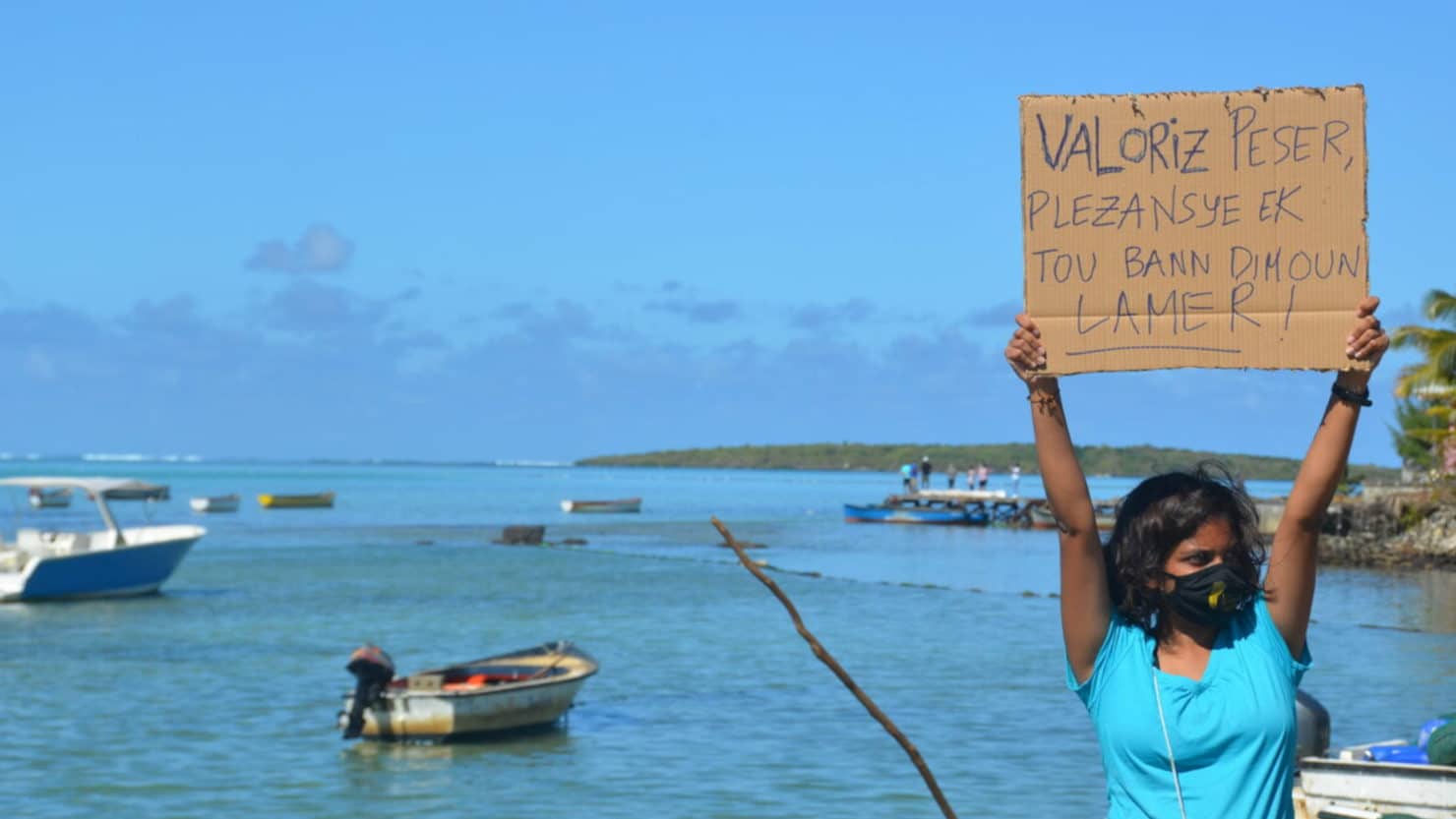To contain the oil threatening their environment and economy, hundreds of volunteers gathered to make DIY booms.
Top: Activist Shaama Sandooyea, one of hundreds of volunteers at the People’s Factory Zone, holds up a sign on the Mahebourg waterfront that translates loosely as “Value fishermen, boaters, and people of the sea.” Visual: Courtesy of Shaama Sandooyea
NIGHT HAD FALLEN on Mahebourg, a bustling trade town on the southeast coast of Mauritius, when what would come to be called the “people’s factory zone” met for the first time. It was an enterprise born of necessity: A crisis was unfolding only a few miles offshore, in the pristine waters from which many of Mahebourg’s residents earn their livelihoods. That first August night, just a handful of locals showed up to rally around what seemed like a dubious idea. To protect the coast from a devastating oil spill, they would make booms from whatever they could find: single-use plastic bottles, fibrous sugar cane waste, even human hair. Word of the DIY initiative spread. Within hours, hundreds of Mauritians came to the people’s factory zone to contribute whatever they could. For weeks on end, an expanding army of islanders worked round the clock, even cutting off their own hair to add to the growing lengths of handmade booms.
“I was surrounded at all times by 200 to 300 volunteers, from fisherfolks and skippers to teachers and students, from homemakers and children to off-duty police officers,” says Virgine Parisot, one of the volunteers. “It felt like the birth of a new movement.”


